
views
X
Trustworthy Source
PubMed Central
Journal archive from the U.S. National Institutes of Health
Go to source
Getting Approval From a Healthcare Professional

Write down a list of questions for your practitioner. After you decide to consider induction, get out a piece of paper and make a list of any concerns or questions that come to mind. Look it over and identify your ‘top five’ must-ask questions for your next doctor’s visit. For example, you might ask, “What are the possible dangers of trying nipple stimulation prior to my due date?”

Consult with your midwife or doctor. When you see your healthcare professional talk to them about whether they think nipple stimulation is an option for you. Be sure to listen carefully to their advice. In the majority of situations, your doctor will advise you to wait until you are at least 40 weeks before trying stimulation. You might say, "At what point would it be a good idea to consider natural induction methods?" Or, you could ask, "Have you read any encouraging research about nipple stimulation?" Remember that you can always make an additional appointment too, if you need extra time. There are a few situations when your doctor or midwife may recommend nipple stimulation (along with other induction methods) for the good of the fetus. For example, nipple stimulation may be recommended if you are beyond 42 weeks and your placenta is being less efficient at providing nutrients, or if you have a complication, such as preeclampsia, which may be putting your baby at risk.
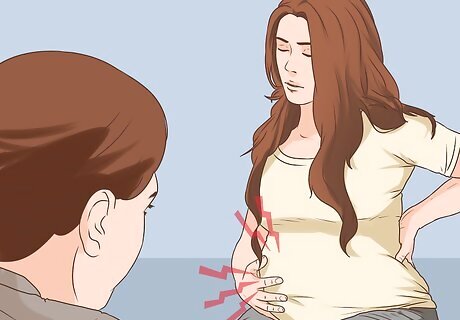
Be sure that your body is primed and ready for labor. Nipple stimulation generally works best on people who are showing the early signs of labor, such as a thinning cervix. You can ask your doctor or midwife to examine you and give you feedback about your odds of success. Even if your doctor says it’s okay, watch your body for cues as to how to proceed. If at any point you feel uncomfortable with the process, stop and give it a rest. For some high risk patients their bodies may feel ready, but their babies can’t necessarily withstand the stresses of induced labor. For example, nipple stimulation can cause abnormal fetal heart rates in some circumstances. If you have a high-risk pregnancy, proceed very cautiously.

Decide whether or not to try other methods as well. To boost the odds of success, question your health professional about attempting multiple induction methods simultaneously. Some non-drug induction options include: walking, sex, castor oil, herbal mixtures, and enemas. Be aware that some of these methods have tentative medical approval with a healthy pregnancy (i.e. sexual intercourse) while others (castor oil) are more frowned upon. You can also ask your doctor about membrane stripping, which would need to be performed by your doctor or another qualified healthcare practitioner.
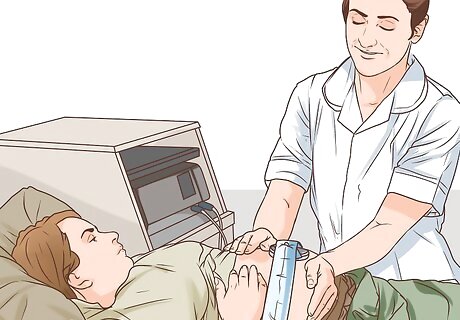
Make a commitment to carefully monitor your progress. Be prepared for your doctor or midwife to suggest some type of monitoring during your attempts at nipple stimulation. This may require you to hook up a fetal heartrate monitor while at your house or you may need to visit the clinic for you stimulation sessions.
Starting the Stimulation Process
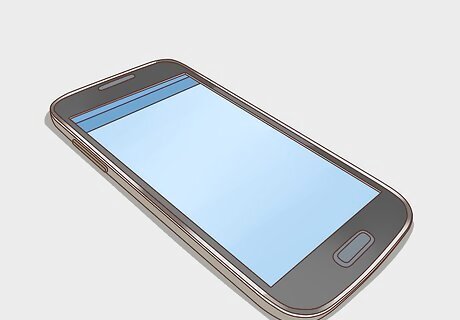
Place your cell phone nearby. Contractions caused by nipple stimulation can come on fast and extremely strong for some people. It is important that you do your stimulation sessions with your partner or with your phone close by. This will make it possible for you to reach out for help if you need it during/after the process.
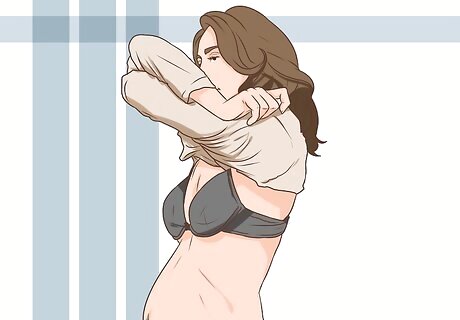
Wear a shirt with soft, thin material, or remove your shirt completely. For stimulation to be effective, you need unfettered access to your breasts. When you are ready to begin, go somewhere private and arrange your clothing in a way that is most comfortable for you. Be aware that some people find that wearing a bra (especially one with an underwire) impacts blood flow and reduces responsiveness .
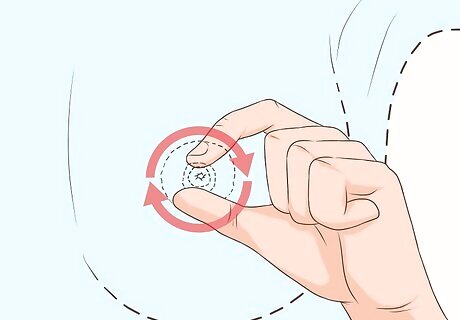
Begin massaging one breast. Start by placing your areola (the dark area around your nipple) between your thumb and forefinger. Gently massage and roll your areola, slowly working your way inward toward your nipple. When you reach the nipple, you can pull on it lightly or massage it. When you are stimulating your nipples one of the goals is to mimic the actions of a baby suckling. This is one major reason why you should only massage one breast at a time. Doing more can overexcite your system. Massaging each breast in turn will hopefully result in your body releasing oxytocin as it would do if you were breastfeeding. Another way to massage the entire breast is to place one palm over the areola and nipple while the other palm cups the outer edges of your breast. Both hands then work in tandem massaging the entire area. It is best to switch to the other breast after your nipple has been erect for one full minute.
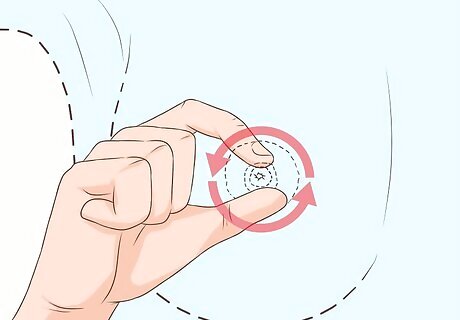
Repeat the process with your other breast. It is best to wait for 2 to 4 minutes before starting the process over again with your as-yet-untouched breast. The entire breast massage should take between 15 to 20 minutes maximum. It is recommended that you repeat the massage a maximum of three times daily.
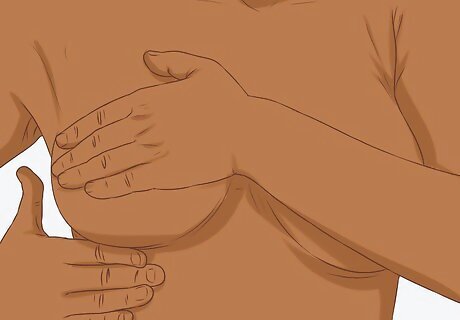
Proceed with caution if you feel contractions. Your goal is to start labor, but you don’t want to rush directly in to heavy contractions. Those can be overly taxing for both you and your baby. For that reason, if you feel a contraction, stop massaging until the contraction concludes. If you choose to continue massaging afterwards, proceed very carefully and stop completely if your contractions last in excess of one minute or if they come 3 minutes apart. If you choose to continue massaging after your contractions start, make sure that you are doing so with the guidance of a medical professional. Be aware that it is quite possible to overstimulate the baby at this point if you are not tracking their heartbeat.
Boosting Your Odds of Success

Keep an induction diary. For each day, jot down a few notes about when you massaged, the duration, and if you felt any contractions. You can also log information about any other induction methods that you are trying. This can be a very helpful tool in seeing which methods work for you and which ones fall flat. You might write, “Massaged both breasts at 1pm for 15 mins total — used lotion, no contractions.” If you prefer to operate on a schedule, you might also set a timer on your phone to alert you for your chosen massaging times. Make sure to bring this journal with you when you visit with your doctor or midwife.
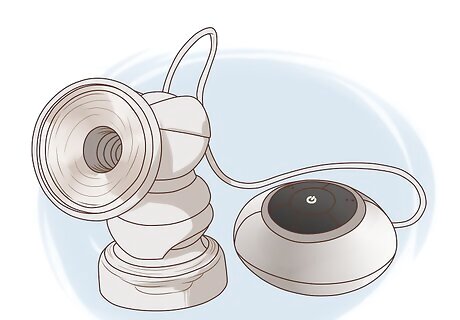
Use an electric breast-pump. Some people find it helpful to use an electric breastfeeding pump in addition to massaging. The pump will apply more forceful pressure to your areola and nipple area, possibly prompting contractions. You may also find that your hands hurt during pregnancy and a pump will do the manual work for you. Experiment with the pump’s settings to find the one that is the most comfortable for you. Remember that the most pressure does not necessarily yield the best results.
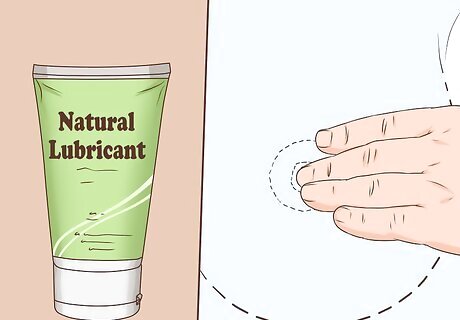
Apply lubrication. If your nipples are dry, sore, or tender, you will have a more difficult time benefiting from (or tolerating) the stimulation technique. Apply a natural lubricant, such as nipple butter or coconut oil, to your areola and nipple. Rub it in as part of the massage process. Repeat as needed.
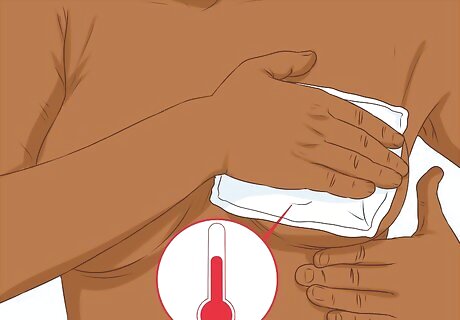
Apply hot compresses. Heat is also known to stimulate your let-down reflex and the release of oxytocin. Place a hot compress on one breast at a time for five minutes each. Rotate over the course of 30 minutes to one hour. Repeat this process up to three times a day. Make sure that the compress is not too hot. It should warm your skin, not burn it. You can also purchase microwaveable heat pouches that double as bra inserts at your local maternity store. You can also take a hot shower. Turn towards the water and direct it toward your breasts while massaging for maximum effect.

Get your partner involved. This may seem like a lot of work, but if you get your partner involved you may be able to lighten up a bit. Show your partner the proper massage technique and the touches that you prefer and ask them to do it for you. Request that they remind you when you are due for stimulation sessions. You can also request that your partner stimulate your nipples by sucking or licking on them. This works best when combined with massage techniques. If you prefer to do the stimulating yourself, your partner can always provide verbal encouragement.



















Comments
0 comment